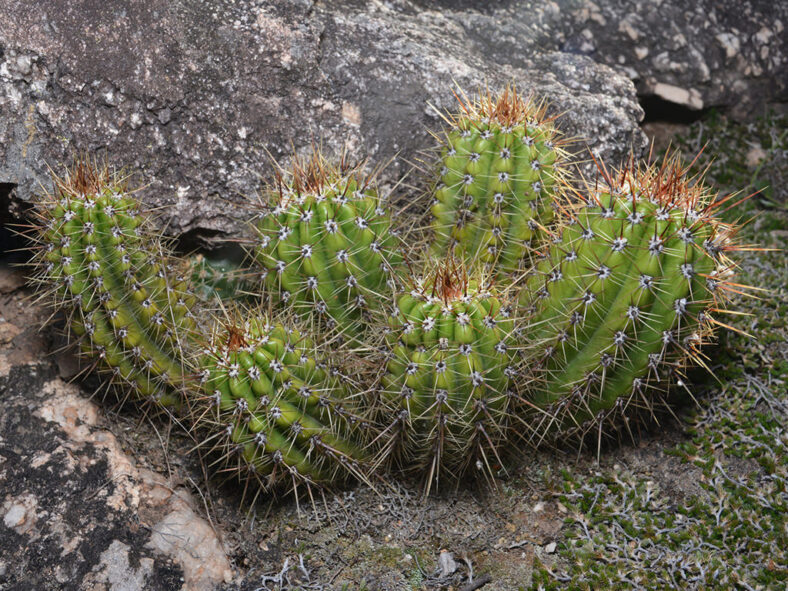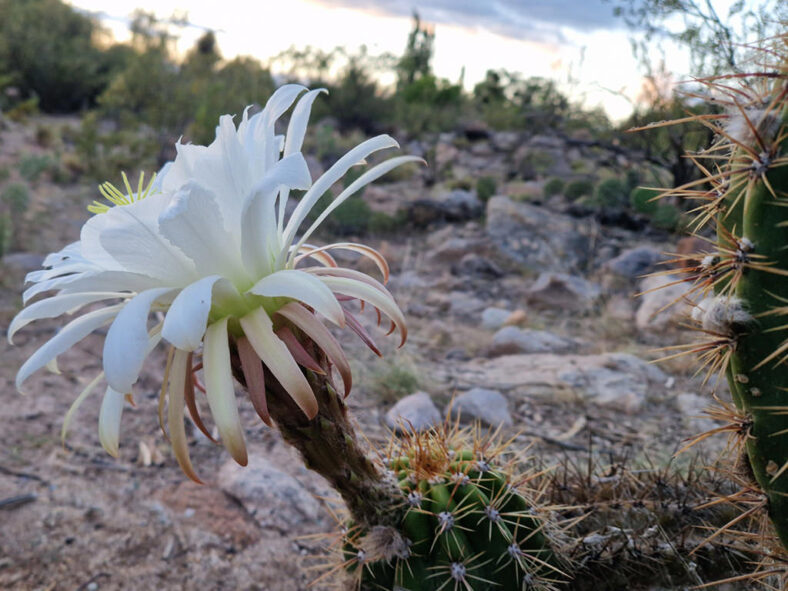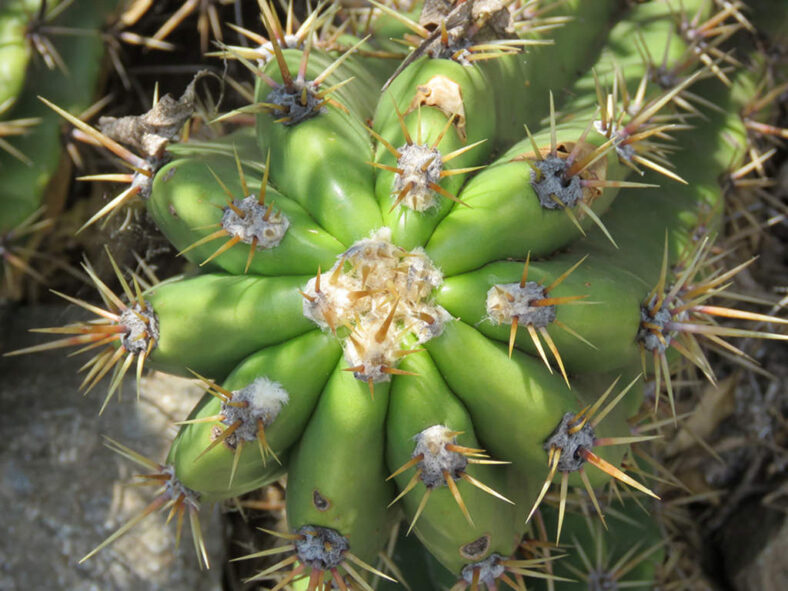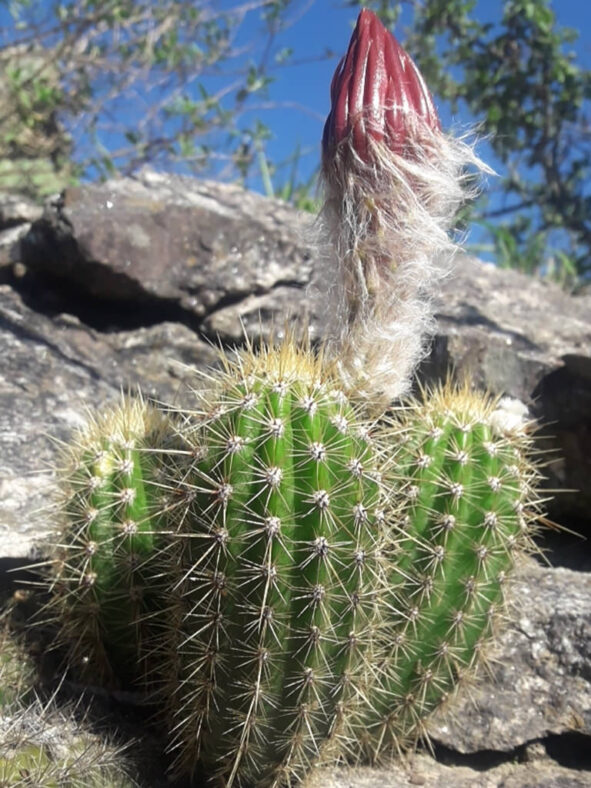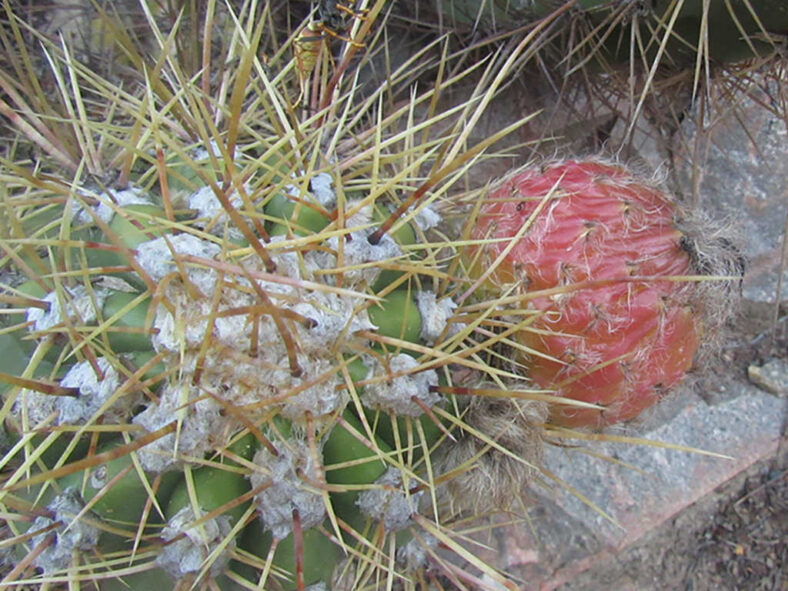Soehrensia candicans is a highly variable species. It was first described as Cereus candicans by Joseph zu Salm-Reifferscheidt-Dyck in 1834 in his work Hortus Dyckensis.
Scientific Name
Soehrensia candicans (Gillies ex Salm-Dyck) Schlumpb.
Common Name(s)
Argentine Giant
Synonym(s)
Cereus candicans, Echinocereus candicans, Echinopsis candicans, Trichocereus candicans
Scientific Classification
Family: Cactaceae
Subfamily: Cactoideae
Tribe: Cereeae
Subtribe: Trichocereinae
Genus: Soehrensia
Etymology
The specific epithet "candicans" (pronounced "KAN-dee-kans") means "shining white, gleaming, becoming white" and refers to the large, white flowers of this species.
Origin
Soehrensia candicans is native to Argentina. It occurs in La Pampa, Buenos Aires, Mendoza, San Luis, Córdoba, San Juan, La Rioja, and Catamarca in the foothills of the Andes and Sierras of the Pampas at altitudes of 330 to 6,560 feet (100 to 2,000 m).
Description
Soehrensia candicans, formerly known as Echinopsis candicans or Trichocereus candicans, is a slow-growing, shrubby cactus with light green to yellowish-green stems that typically have 9 to 11 low ribs lined with clusters of brownish-yellow spines. The stems are cylindrical, upright to sprawling, and mostly branch at the base, growing over 24 inches (60 cm) long and 7.2 inches (18 cm) in diameter. The large, white-felted areoles are spaced 0.8 to 1.2 inches (2 to 3 cm) apart, each bearing 10 to 12 radial spines and a few central spines. The radial spines can reach lengths of up to 1.6 inches (4 cm), while the central spines can grow up to 4 inches (10 cm) long.
In late spring, Soehrensia candicans produces large, fragrant flowers that open at night. While the flowers are typically white, some populations exhibit a range of colors, including yellow, orange, pink, and red. They are funnel-shaped and can measure up to 10 inches (25 cm) in length and 7.6 inches (19 cm) in diameter. The fruits are globose to ovoid and split down one side.
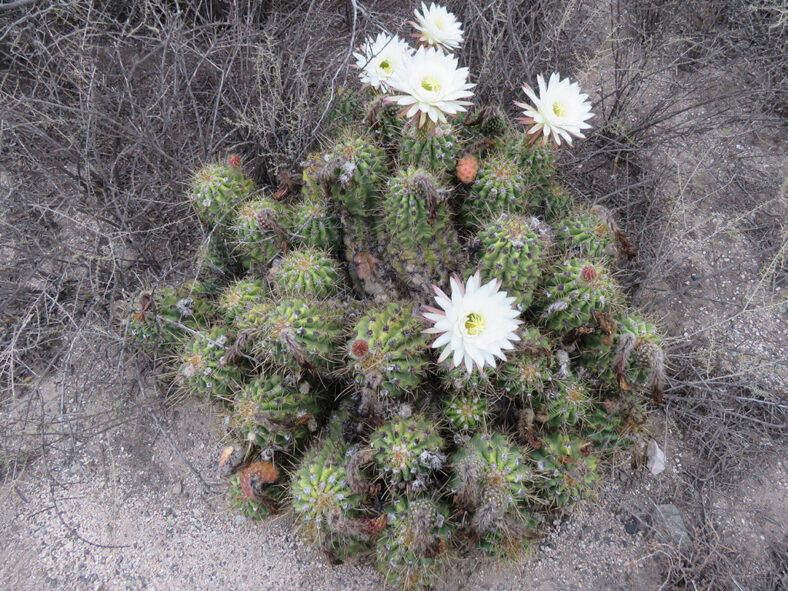
Hybrids of Soehrensia candicans
How to Grow and Care for Soehrensia candicans
Light: Soehrensia candicans thrives in full sun to partial shade. When grown indoors, placing the plant near a window that receives at least 6 hours of sunlight daily is ideal. In the spring, if possible, move the plant outdoors, but be sure to acclimate it to direct sunlight gradually to avoid sunburn.
Soil: This cactus prefers sandy or gritty soil, but it can tolerate other soil types as long as they provide good drainage. You can use a commercial cactus potting soil mix or create your own.
Temperature: Soehrensia candicans is highly tolerant of high temperatures but prefers cooler conditions in winter, ideally between 41°F and 50°F (5°C and 10°C). It is hardy in USDA Plant Hardiness Zones 9a-11b, which have average annual extreme minimum winter temperatures ranging from 20°F to 50°F (-6.7°C to 10°C).
Watering: During the growing season, water the plant thoroughly but allow the soil to dry out completely before watering again. Avoid letting the container sit in a saucer of water. Suspend watering during winter.
Fertilizing: This cactus benefits from fertilizing during the growing season. Apply a water-soluble fertilizer and suspend feeding during winter when the plant is dormant.
Repotting: Repot as needed, preferably in late winter or early spring, using a slightly larger container with drainage holes. Ensure the soil is dry before repotting.
Propagation: Soehrensia candicans can be easily propagated from offsets that grow around the base of the stems. The best time to remove offsets is in early summer.
Learn more at How to Grow and Care for Echinopsis.
Toxicity of Soehrensia candicans
Soehrensia candicans is non-toxic to humans or pets, but keep it away from pets and children due to its sharp spines.
Links
- Back to genus Soehrensia
- Succupedia: Browse succulents by Scientific Name, Common Name, Genus, Family, USDA Hardiness Zone, Origin, or cacti by Genus
Photo Gallery
Click on a photo to see a larger version.
